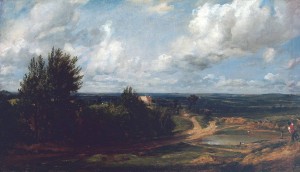The following appeared in the 1912 volume: “Hampstead, its historic houses, its literary and artistic associations” by Anna Maxwell Beyond the flagstaff and on the same side of the pond stands the “Castle” Hotel where the Court Leet met. Concerning the full title of this inn, it is extremely doubtful whether Wat Tyler’s chief captain ever …
Category: NW3
1762: Hampstead Town
This image illustrates Hampstead in the year 1762, showing notable buildings, inns and public houses. Source: T F T Baker, Diane K Bolton and Patricia E C Croot, ‘Hampstead: Hampstead Town’, in A History of the County of Middlesex: Volume 9, Hampstead, Paddington, ed. C R Elrington (London, 1989), pp. 15-33. British History Online www.british-history.ac.uk/vch/middx/vol9/pp15-33
Branch Hill Pond
[advanced_iframe securitykey=”73bfdf36bff161fdb6d48c80a87afbe943e66891″ src=”http://theundergroundmap.com/iframe.html?id=37071&mapyear=1860&zoom=16&show=westbourne&iheight=400″ width=”400″ height=”400″] Branch Hill Pond, which was covered in during 1889 because of the building of a covered reservoir, can still be seen as a distinct hollow in the heath which is still grassland even now. John Constable (1776-1837) came to Hampstead Heath in the late summer of 1819, seeking relief from …
Spedan Close, NW3
Spedan Close was the site of an innovative council housing scheme.
Whitestone Pond
[advanced_iframe securitykey=”73bfdf36bff161fdb6d48c80a87afbe943e66891″ src=”http://theundergroundmap.com/iframe.html?id=37072&mapyear=1860&zoom=16&show=westbourne&iheight=400″ width=”400″ height=”400″] Whitestone Pond lies 135 metres above the London Basin, and at the summit of Hampstead Heath marks the highest point in London. This area, lying above the pond, is the source of one of London’s “lost” rivers, the River Westbourne. These headwaters gathered to form the pond before heading off …
Farming in Hampstead
The demesne (land attached to a manor and retained for the owner’s own use) occupied the heart of Hampstead manor and parish. It was originally owned by Westminster Abbey. By 1539 the whole estate was leased to William Wrench. There were 296 acres of demesne farmland in 1646, little changed since 1312, but the acreage …
Hampstead
Hampstead is on a steep hill and the tube station platforms are the deepest on the London Underground network, at 58.5 metres below ground level. It has the deepest lift shaft on the Underground. Although early records of Hampstead itself can be found in a grant by King Ethelred the Unready to the monastery of …
Belsize Park
Modern Belsize includes the manor of Belsize and the northern part of the Chalcots estate. This article summarises the history of the two estates and explains how in the second half of the nineteenth century Belsize was transformed from farmland and gentlemen’s country houses to a middle class suburb. The Belsize Estate Belsize, or …
Frognal, NW3
The origin of the name of Frognal, first recorded in the early 15th century, is not known. The ‘house called Frognal’, lay on the west side of the road, probably on the site later occupied by Frognal House. The locality is of some importance as it contained the Hampstead Estate manor-house where the Courts Leet …
Erskine House
Erskine House is situated at Heath End, next door to the Spaniards Inn. Its most famous resident was Thomas Erskine (1750-1823). In 1912, Anne Maxwell wrote the book “Hampstead, its historic houses, its literary and artistic associations”. The rest of this post is taken from the book – any reference to “now” below refers to …





